Let's Make it (Email) Official
Become an AuthenTEAK Insider and be first to know about new collections, exclusive sales, and special offers.
Let's Make it (Email) Official
Become an AuthenTEAK Insider and be first to know about new collections, exclusive sales, and special offers.

Style, comfort, versatility, and price are major selling points for patio furniture during the warmer months. Once temperatures start dropping in the fall, however, homeowners consider the durability and longevity of their furniture and begin to ask: Will my patio furniture perform—and do I have patio furniture that can be left outside in the winter?
The answer could mean the difference between replacing furniture quickly—or creating lasting value by enjoying high-quality outdoor furniture that is built to last season after season, regardless of the weather. To learn more on what is appropriate, we talked to a few industry experts to get the lowdown on the materials for cold climates, as well as tips on how to ensure your patio furniture makes it through the winter.
When it comes to outdoor furniture, there are 4 main categories of frame materials and each one has its own pros and cons, yet before we get started on learning about each material, we believe that it’s extremely important to mention that regardless of the frame material, the manufacturing process and attention to detail that is performed during the construction of the furniture, is the single most important factor in building furniture that will withstand even the harshest elements, because regardless of the material if the furniture is poorly made, it will not last. Game over!
One primary way to ensure you purchase furniture that is built to last is to order from brands that have a longstanding history and reputation for building premium outdoor furniture. Barlow Tyrie is a prime example as this 3rd generation family-owned business has been making furniture in the UK since 1920 (over 100 years!). Other brands such as Gloster, Kingsley Bate, and even relative newcomer, Povl Outdoor, have solid reputations for crafting exceptional outdoor furniture that is made for life.
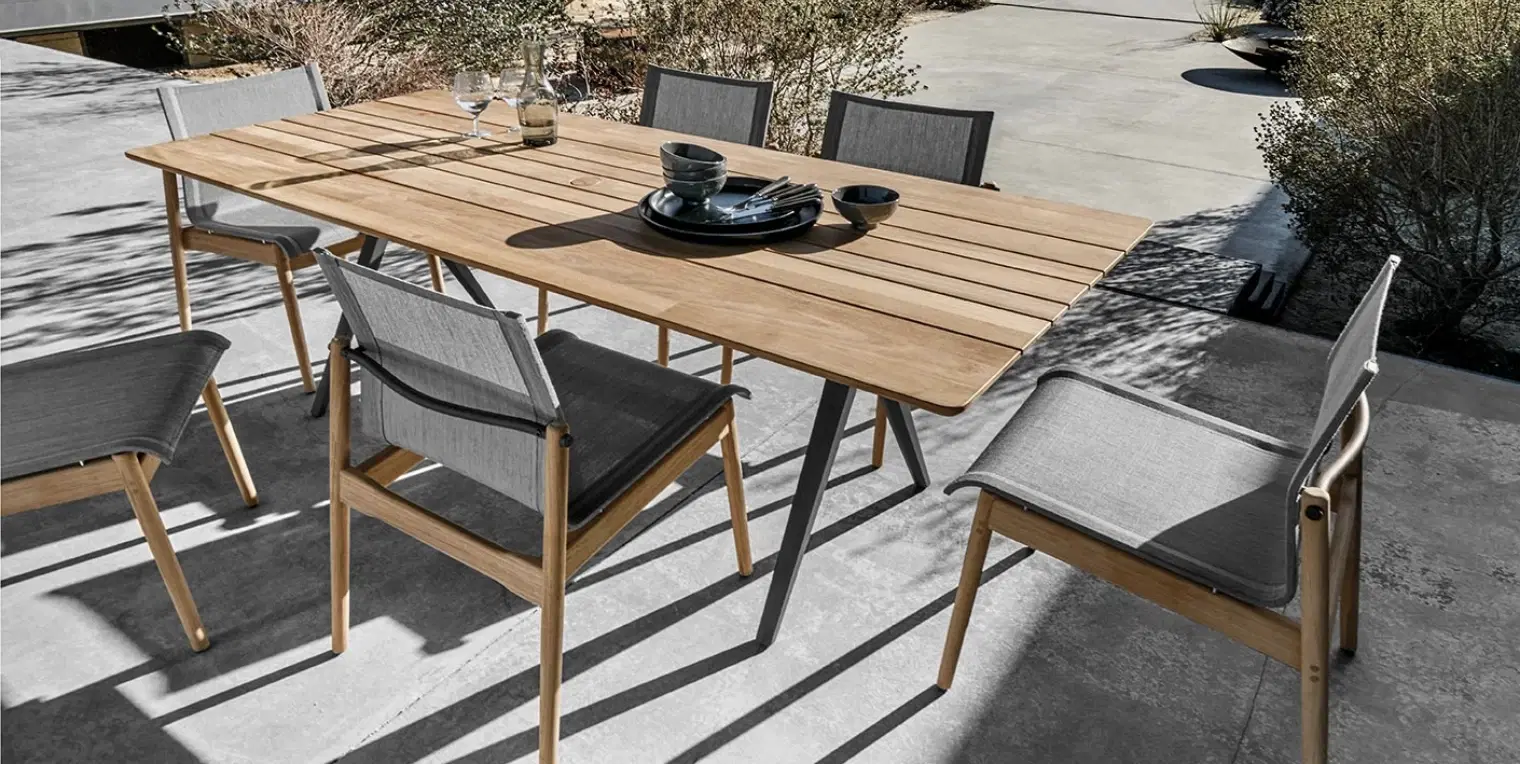
First the good news: The overwhelming majority of patio furniture can be left outside in most parts of the country. But you’ll need to know exactly what type of furniture you’re working with, says Megan Pierce-Dozier, with outdoor furniture leader Kingsley Bate.
“It depends on the material,” says to Pierce-Dozier, one of the experts who agrees both the body material and frame can make or break your outdoor furniture during the winter. While the materials that cover a chaise chair may be waterproof, for example, the frame may not.

Regardless of the material, the manufacturing process and attention to detail during outdoor furniture’s construction process is the single most important factor in building furniture that will withstand even the harshest elements. Rule of thumb: if the furniture is poorly made, it won’t last, so it’s important to invest in high-quality outdoor furniture from trusted brands.
Look for brands that have a longstanding history and reputation of building premium outdoor furniture. Barlow Tyrie, for instance, is a third-generation, family-owned business has been making furniture in the United Kingdom since 1920. Other brands such as Gloster, Kingsley Bate and POVL Outdoor have solid reputations of crafting exceptional outdoor furniture that is made for life.
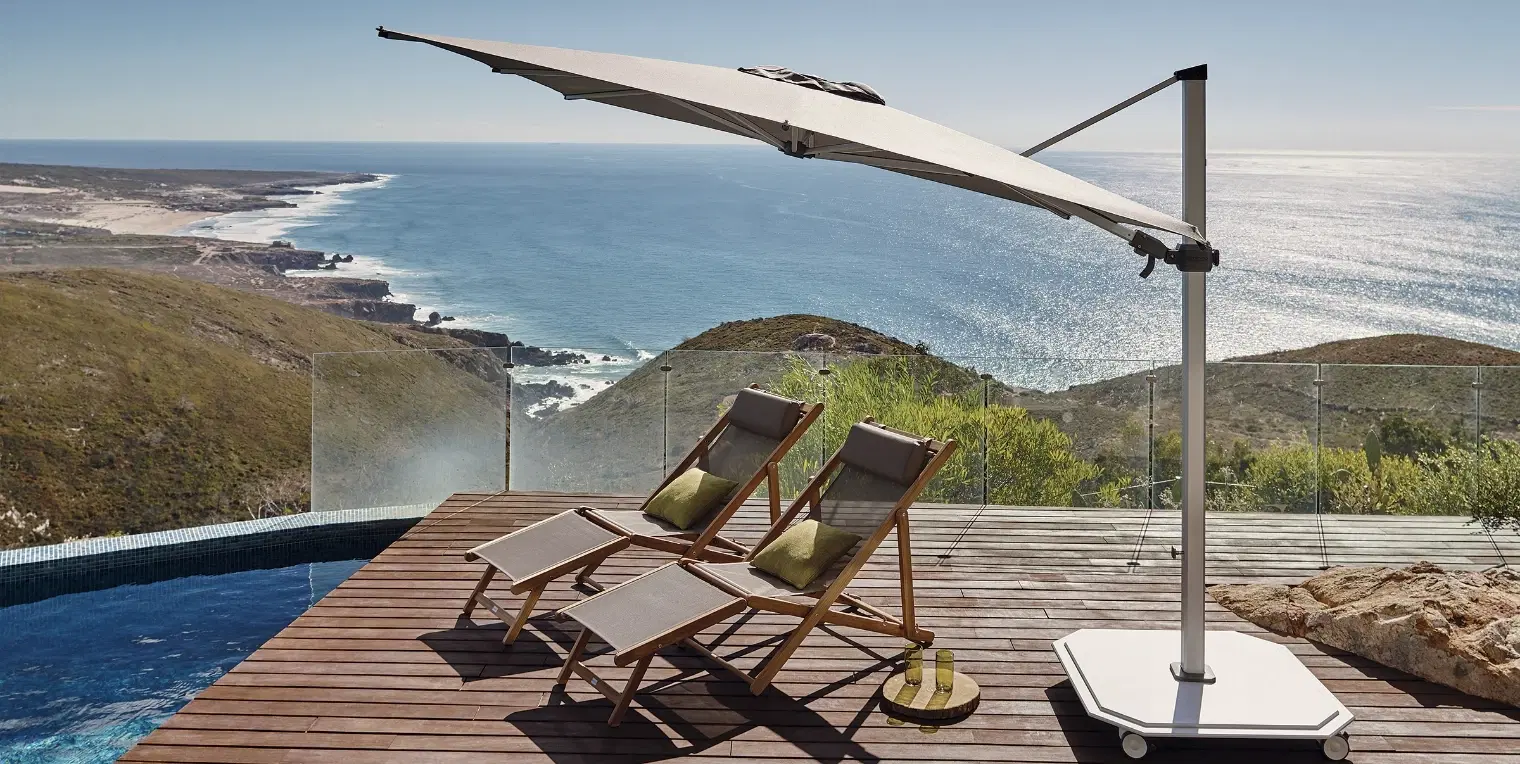
Whether or not your furniture can be left outside will also depend on the frame’s material. Iron-based frames will rust when exposed to precipitation and should be avoided. In order to leave wicker furniture outside, you’ll want to ensure your frame is made from all-weather hardware, such as aluminum, stainless steel, or galvanized steel. Since aluminum is a lightweight material, people living in windy climates should make sure any aluminum frames are reinforced with all-weather steel, so that it doesn’t get blown around.
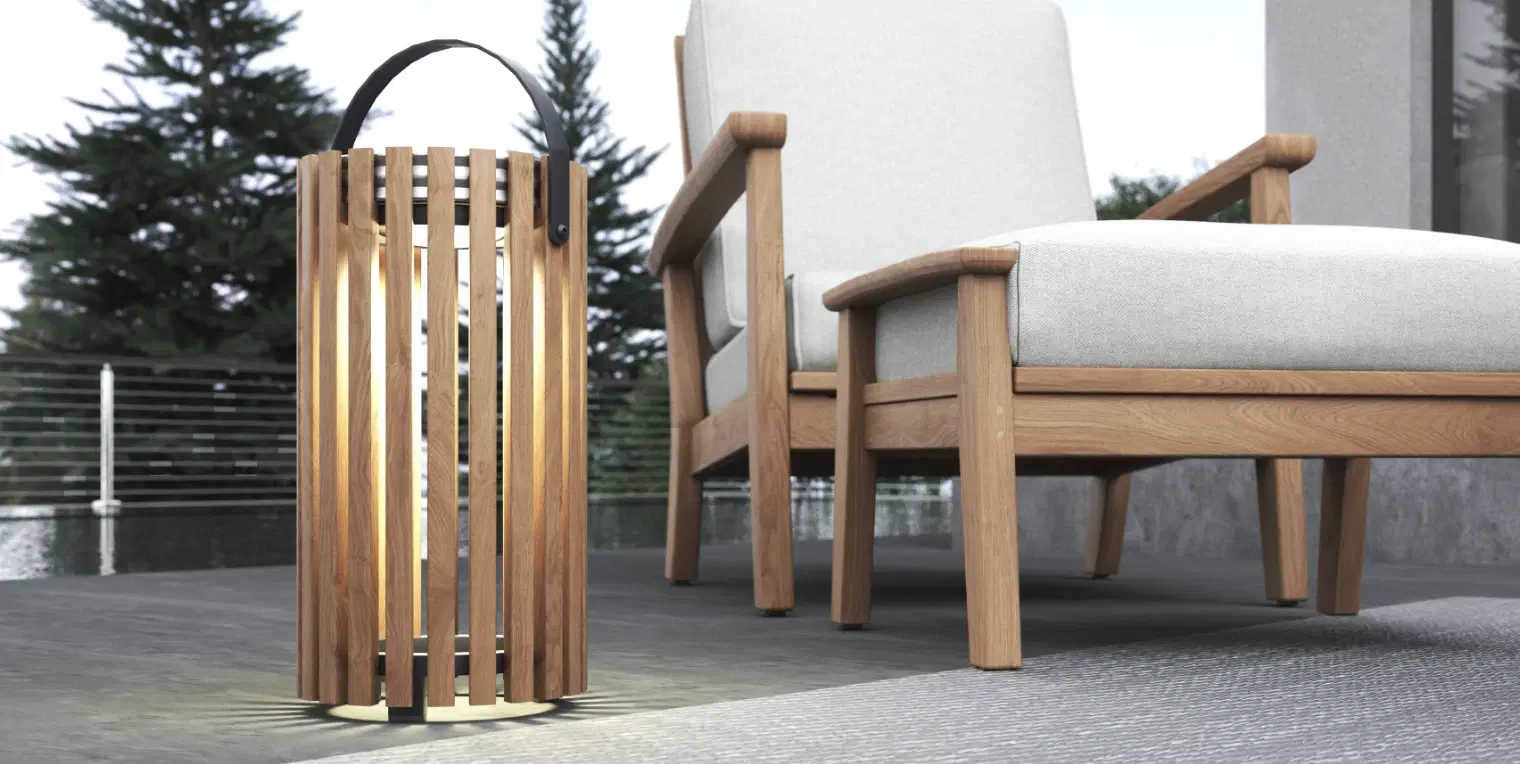
The best wood for premium outdoor furniture is teak wood, a sustainably grown hardwood that has a naturally occurring high oil content that makes it highly resistant to rot, mold, mildew, and insect infestation. When properly constructed of grade-A kiln-dried teak with mortise and tenon joinery, teak furniture will outperform most other materials in both cold and warm climates. (When exposed to direct UV rays, teak furniture will weather to a silvery-grey color on the top surface. This grey color is cosmetic only and does not impact durability. To learn more, view our tips for teak furniture care.)
“Go right ahead and leave it outside all year; it looks great with a few inches of snow,” says Charles Hessler, Executive Vice President of Barlow Tyrie. Headquartered in the UK with a domestic base in the northeastern United States, this maker of luxury outdoor furniture knows a thing or two about what patio furniture will outlast cold temperatures. Hessler notes: “Teak is an all-weather material and is used extensively in marine applications. As long as the product is made using first-grade teak (grade-A teak) with proper techniques and all-weather hardware, there shouldn’t be an issue leaving it out 365 days a year.”
So, how do you determine if your patio furniture is made from grade-A teak? Grade-A teak is timber taken from the center of the log and is the highest-quality teak wood. Look for a uniform, golden brown color along with a close grain structure. Grade-A teak should be void of large knots in the wood and should have a smooth appearance.
Grade-B teak wood is suitable in many applications as it has virtually the same longevity characteristics as grade-A teak; however, it cosmetically has more of a rustic look to the exposed surfaces. Always avoid grade-C teak, as this cut of wood is from the softer exterior of the tree and does not have the same weathering characteristics. Grade C is frequently noticeable when you see long streaks of lighter color wood along the edges of a piece of furniture. To ensure your furniture looks good year after year, Hessler points out that “a yearly scrub up with our teak cleaner in the spring will bring the teak —almost— back to looking new and clean.” Hessler adds: “beware of chemically treated teak, easily identified by its slightly darker color than the trademark golden-brown color of the real stuff.” Lots to consider!

This material is known by several common names, including synthetic wicker, all-weather wicker, and resin wicker. Regardless of what name each manufacturer uses, the actual material is made of PE (polyethylene), a material that mimics the look of natural rattan, with increased durability and strength.
Woven outdoor furniture that’s designed to last in a cold climate will have a sub-frame made of powder-coated and fully welded aluminum. The actual woven (wicker) material should be 100% solution-dyed—which means the color goes all the way through the fiber and is not just on the top layer. This helps resist fading, cracking, or peeling. Lastly, quality outdoor wicker furniture should have been treated with a UV stabilizer, which further prevents the fiber strands from fading, cracking, or peeling. Since the UV stabilizer is not something that can be seen or felt, it’s important to order furniture from reputable brands that are known for quality—such as Cane-line or Lane Venture.
The outdoor industry now offers a sister material to synthetic wicker, and it comes in the form of rope. These woven ropes should all mimic the characteristics of outdoor wicker in that they are made of PE, they are solution-dyed, and they have a UV stabilizer to help ensure beauty and longevity.
Meagan Pierce-Dozier of Kingsley Bate, makers of popular woven outdoor furniture, says: “Theoretically, all wicker patio furniture can be left outdoors all year; however, if you want your woven furniture to last, there can be no shortcuts, and all materials need to be of premium quality and constructed with factory precision.”
Pierce-Dozier says: “A little TLC goes a long, long way, and while covering your patio furniture during inclement weather is not a requirement, we do recommend protective covers during long periods of inactivity to help ensure your furniture not only lasts longer but that it also continues to look good.”
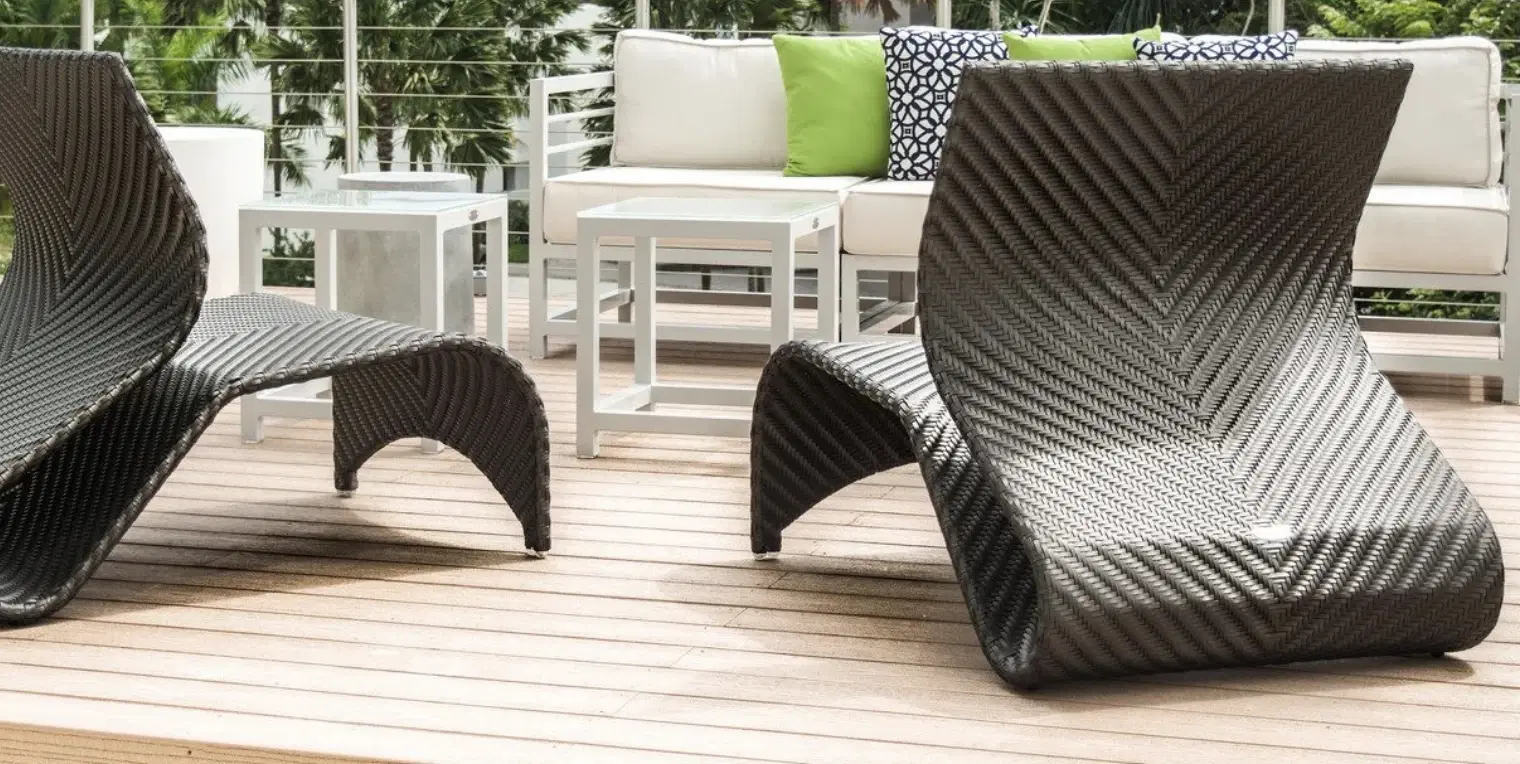
Traditional wrought-iron patio furniture is largely a product of the past, as it has given way to materials such as aluminum or stainless steel, which allow for innovative designs and exceptional durability while eliminating the potential for rust. Aluminum outdoor furniture is broken into two main categories: cast aluminum and extruded (aka tubular) aluminum.
In these two categories of aluminum, the metal material is identical, but the manufacturing process is different. Cast aluminum is constructed by pouring hot liquid aluminum into a mold or a cast, offering the ability to achieve exquisitely detailed designs. Extruded aluminum is made of a hollow tube that is bent and cut into its final shape. This lightweight yet sturdy option is rapidly becoming one of the most popular options in all outdoor furniture categories due to its light weight, low maintenance, and ability to withstand extreme changes in climate.
Stainless steel is also a great option for luxurious and durable patio furniture, as it is even stronger than aluminum. The industry standard stainless steel is 304-grade and is suitable for all climates; however, in salt air environments, stainless steel may oxidize, which starts to give the appearance of rust. To avoid this potential concern, select stainless steel furniture made of 316 marine-grade stainless or electropolish stainless steel, both of which are highly resistant to the effects of salt air. Powder-coated stainless steel is also suitable for salt air environments, as the paint finish acts as a protective barrier.
For both aluminum and stainless steel, some of the biggest keys to longevity are: that the metal is made of 100% aluminum or 100% stainless steel (as opposed to 80% of the main metal and 20% of a lower-quality metal that doesn’t stand up to the elements); that the furniture is fully welded when possible; and, finally, that when screws and bolts are needed, those fittings are the proper size and material and will not become lose over time. Sticking to established brands with reputations for producing outstanding outdoor furniture is the best way to ensure that your investment in high quality will pay off over time. Collections like the Sunset West’s Bristol Collection and Laguna Collection and Sika Designs’ Alu Affaire Collection combine superior craftsmanship with high-quality materials and modern styles.
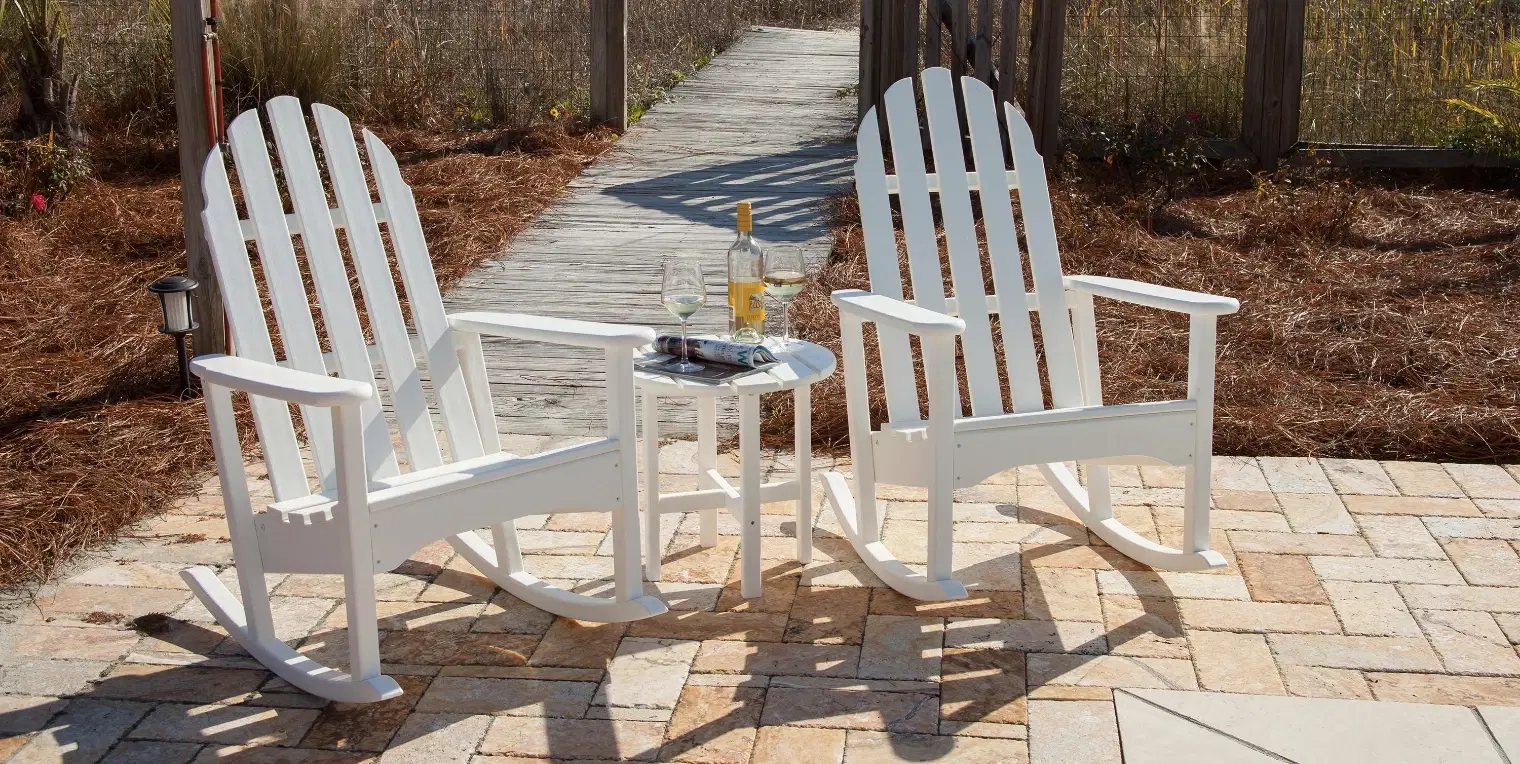
High-density polyethylene (or HDPE) is also known as poly-lumber or even recycled milk jug furniture and is built to withstand all four seasons and a wide range of climates—from hot sun to frigid winters. When constructed properly, it ranks as one of the most durable and low-maintenance materials in the outdoor furniture industry.
These materials don’t absorb much heat in the sun, and excessive moisture doesn’t cause rot or warping. POLYWOOD is an industry leader in HDPE furniture, and its USA-made Adirondacks, rocking chairs , and deep-seating collections are backed by a 20-year warranty. In fact, POLYWOOD has become so synonymous with high-quality HDPE furniture, many people refer to all HDPE furniture as POLYWOOD furniture.
“HDPE furniture is amazingly low-maintenance and virtually indestructible—but better yet, this furniture has a great sustainable story,” says AuthenTEAK CEO Eric Brenner. “Not only does the POLYWOOD brand of furniture put ocean-bound plastics to good use, but because their furniture is so well made, it does not have to be replaced very often.”
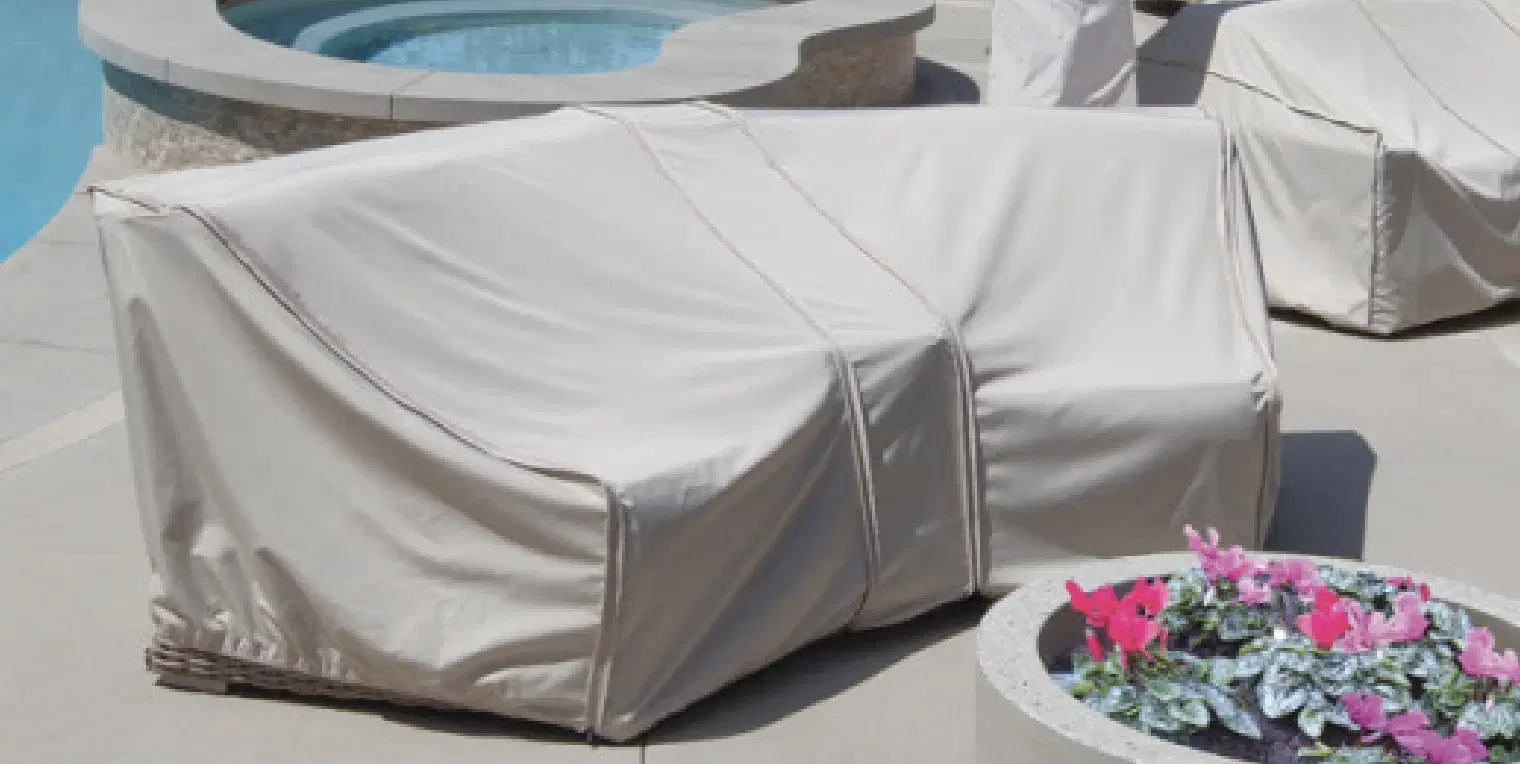
Investing in high-quality outdoor furniture means purchasing something that’s intended to last for decades—if not generations. You should be able to find a material that suits your style, needs, and location—and know that it will perform season after season.
Our biggest recommendation: pay attention to your furniture as it sits outside and give it a quick once-over with some water and a nylon bristle brush from time to time. Once or twice a year is most likely plenty, unless you live under a tree canopy that is continually dropping leaves, sap, and debris. The goal prevent dirt and air pollutants from building up and baking into the cracks and corners of the furniture for years at a time. While top-quality outdoor furniture is designed to withstand the elements, it doesn’t hurt to double down and use protective covers to prevent wear and tear. Most outdoor furniture protective covers are weather resistant and are treated to help protect from UV rays. Prior to purchasing any outdoor furniture protective covers, ensure that you measure the dimensions of your furniture – you want the covers to fit nice and snug! Consult our guide to protecting outdoor furniture for more information on keeping your investment lasting long and looking beautiful for years to come. For seasonal inspiration, read about how to transition your patio for fall.
Categories
Recent Posts